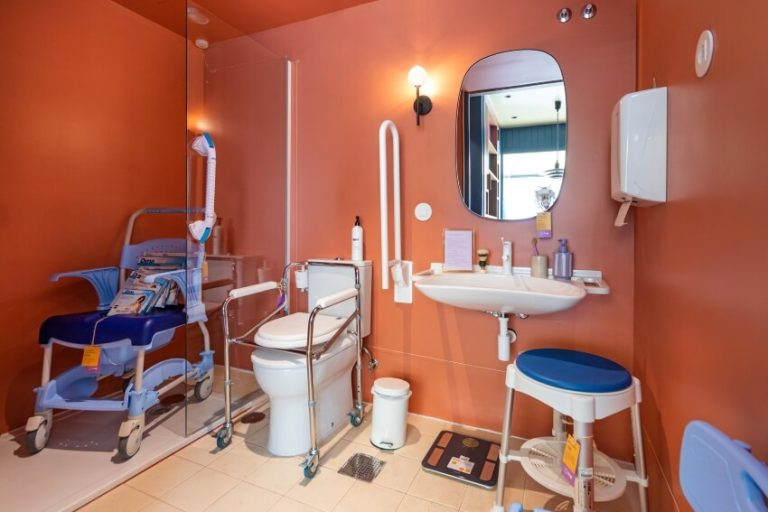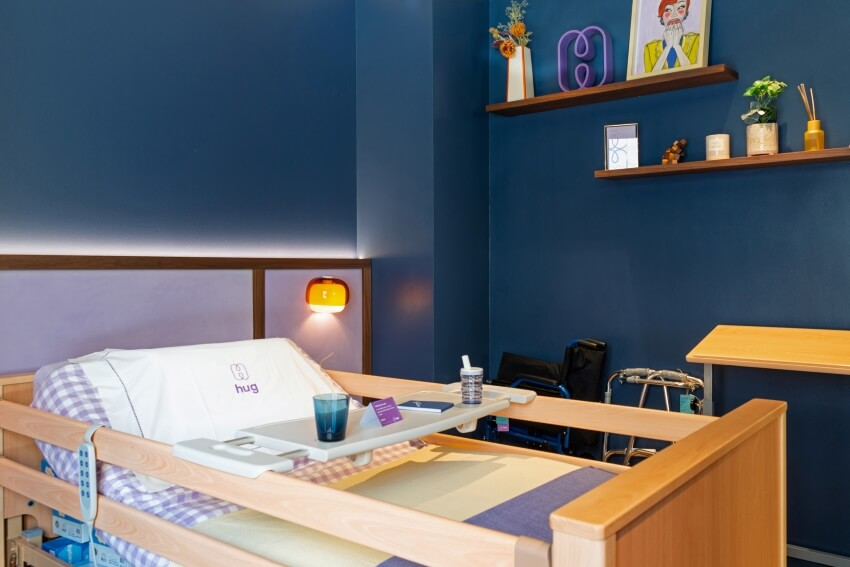Tips for Making a Home Safe for Seniors
- Hugo Oliveira
- Sep 7
- 4 min read
What makes a home safe for seniors? As we age, new needs begin to emerge, and providing an environment that meets these demands is essential to ensuring active and safe aging. This is where the importance of having a home adapted for seniors comes in.
In this article, we share essential tips and simple practices that will help prevent accidents and promote the well-being and safety of seniors in their own homes. Discover our valuable advice on senior-friendly bathrooms, senior-friendly bedrooms, and safe and functional circulation areas.
Bathrooms adapted for the elderly: prioritizing safety and well-being
When it comes to creating a safe home for seniors, the bathroom deserves special attention. This space, often associated with moments of relaxation and self-care, can unfortunately become a risk zone for seniors. Therefore, we must adapt it to be both a safe and welcoming space. Here are some practical suggestions:
Non-slip flooring : Replacing traditional flooring with non-slip solutions is not only a matter of safety, but also of love and care. By choosing this type of flooring, you'll be providing a safe and stable base, providing peace of mind with every step.
Grab bars: Make daily movements safer and more independent by installing grab bars. Strategically placed next to the toilet and sink, or even in the shower, these bars provide extra support that makes daily life easier.
Accessible bathtub: Imagine the comfort of a bathtub with a door and a transfer bench, inviting you to enjoy peaceful and safe baths. Adding a bathtub seat transforms bath time into a safe and comfortable break to refresh and rejuvenate.
Shower with doors: Offer an easy-access shower where you don't have to lift your legs to get in. This modification paves the way for carefree bathing moments, reducing risks and promoting independence.

At the Hug store, you'll find all kinds of bathroom products for seniors, especially from the Identités brand, a leader in creating technical aids specifically designed for seniors. These include bathtub risers and seats, steps, supports, anti-slip mats, bathing accessories, and more.
Room adapted for the elderly: comfort and safety in every detail
The bedroom, such a personal and intimate space, should truly be a sanctuary of comfort and safety for the elderly. Transforming this space into a place of complete rest isn't difficult, and small changes can make all the difference. Here are some suggestions for creating a bedroom adapted for the elderly:
Adequate bed: Start by choosing a bed that allows the elderly person's feet to touch the floor when sitting and their legs to form a 90° angle. This feature not only makes it easier to lie down and get up, but also promotes healthy posture. If the bed is too low, consider using wooden wedges to raise it to the desired level.
Mattress and bedding: Mattress quality is crucial, and fortunately, the market offers a variety of options, including for those with specific back problems. We recommend opting for a less dense mattress, which provides superior comfort. When making the bed, keep the blanket securely tucked between the mattress and the bed frame to prevent falls.
Pillows: Choose orthopedic pillows, which adapt perfectly to the contours of the cervical spine, promoting relaxation of the neck muscles. With an anatomical design that provides pressure relief, they offer extra comfort in the cervical region.
Safe furniture: When selecting furniture, choose pieces with rounded corners to avoid the risks associated with sharp corners.

Safe circulation areas, step by step
The home's circulation areas, which include doors, hallways, and stairs, often don't receive the attention they deserve. However, these details ensure safe movement and independence. Here's a guide to optimizing these areas:
Doors and Hallways: If your family uses mobility aids such as walkers or wheelchairs, the width of doors and hallways is a detail that should be reviewed. An ideal width to ensure smooth, hassle-free movement is 90 cm, and should not be less than 80 cm. Door handles, preferably lever handles and placed at an accessible height, make opening and closing doors easier.
Ramps: Introducing ramps can be a great way to overcome architectural barriers, providing a smooth transition between different levels of the home. Ideally, these should have a gentle slope and be covered with non-slip material, along with a handrail for additional support.
Flooring : A good starting point is to evaluate the existing flooring in your home. Small changes, such as securing rugs to the floor, replacing them with wider options, or simply removing unnecessary upholstery, can reduce the risk of tripping. If more extensive work is required, hardwood, tile, vinyl, or laminate flooring are good choices, as they facilitate wheelchair maneuverability. Still, to avoid slipping, be sure to use non-slip solutions and wear appropriate footwear.
In addition to these adaptations, there are other details that can make all the difference in building a safe home for the elderly.
In homes with more than one floor, it is worth considering installing a stairlift , or alternatively, reorganizing the spaces so that all daily needs can be met on the ground floor.
A furniture layout with free and safe paths avoids obstructions that could result in falls or other accidents.
Last but not least, it is essential to ensure adequate lighting, especially in areas with stairs, steps or uneven surfaces , so that visibility is maintained at all times, promoting safe and comfortable movement.

At Hug Group , we work hand in hand with you on our mission to make every home a haven of comfort and safety for seniors. From senior-friendly bathrooms to the selection of assistive products that make daily life easier, we're here to help you create a safe and senior-friendly home.
Contact us or visit our store and discover how we can help provide a happier and safer daily life for everyone.